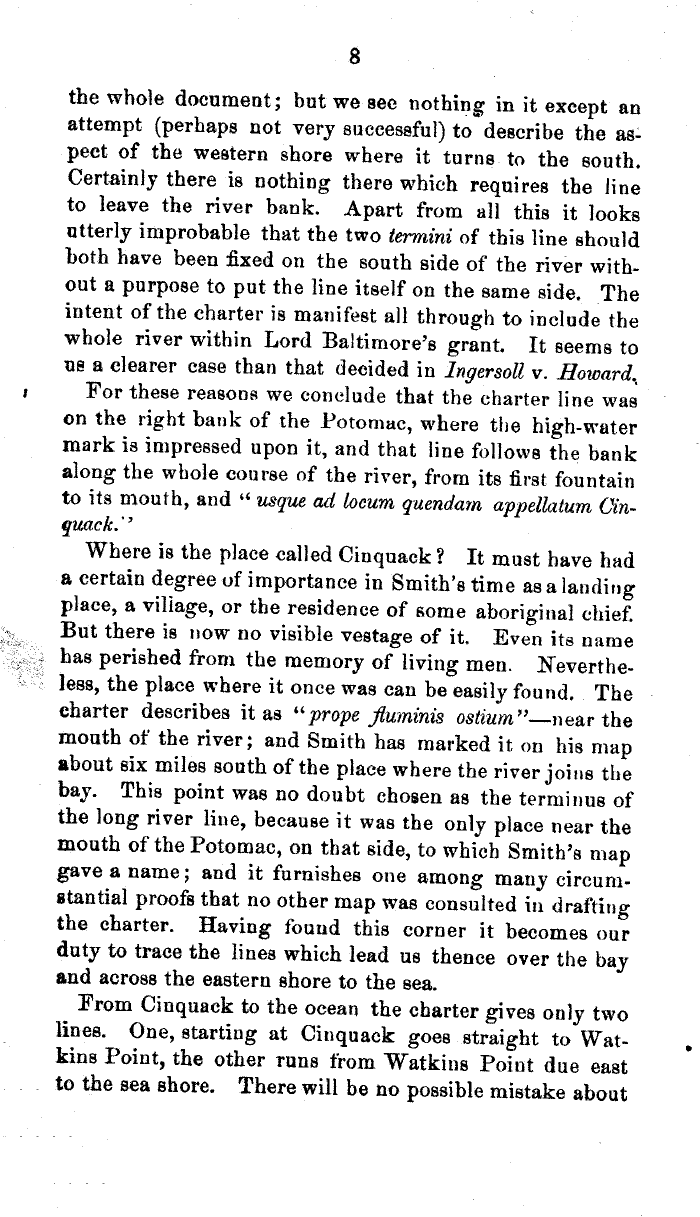| 8
the whole document; but we see nothing in it except an
attempt. (perhaps not very successful) to describe the as-
pect. of the western shore where it turns to the south.
Certainly there is nothing there which requires the line
to leave the river bank. Apart from all this it looks
utterly improbable that the two termini of this line should
both have been fixed on the south side of the river with-
out a purpose to put the line itself on the same side. The
intent of the cbarter is manifest all through to include the
whole river within Lord Baltimore's grant. It seems to
us a clearer case than that decided in Ingersoll v. Howard;
i For these reasons we conclude that the charter line was
on the right bank of the Potomac, where the high-water
mark is impressed upon it, and that line follows the bank
along the whole course of the river, from its first fountain
to its mouth, and °j usque ad locum quendam appellatum 0n-
quack."
Where is the place called Cinquack ? It must have had
a certain degree of importance in Smith's time as a landing
place, a village, or the residence of some aboriginal chief.
But there is now no visible vestage of it. Even its name
has perished from the memory of living men. Neverthe-
less, the place where it once was can be easily found. The
charter describes it as °1 prope fluminis ostium "-near the
mouth of the river; and Smith has marked it on his map
about six miles south of the place where the river joins the
bay. This point was no doubt chosen as the terminus of
the long river line, because it was the only place near the
mouth of the Potomac, on that side, to which Smith's map
gave a name; and it furnishes one among many circum-
stantial proofs that no other map was consulted in drafting
the charter. Having found this corner it becomes our
duty to trace the lines which lead us thence over the bay
and across the eastern shore to the sea.
From Cinquack to the ocean the charter gives only two
lines. One, starting at Cinquack goes straight to Wat-
kins Point, the other runs from Watkins Point due east
to the sea shore. There will be no possible mistake about
|

